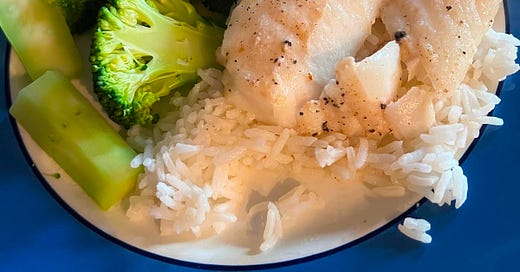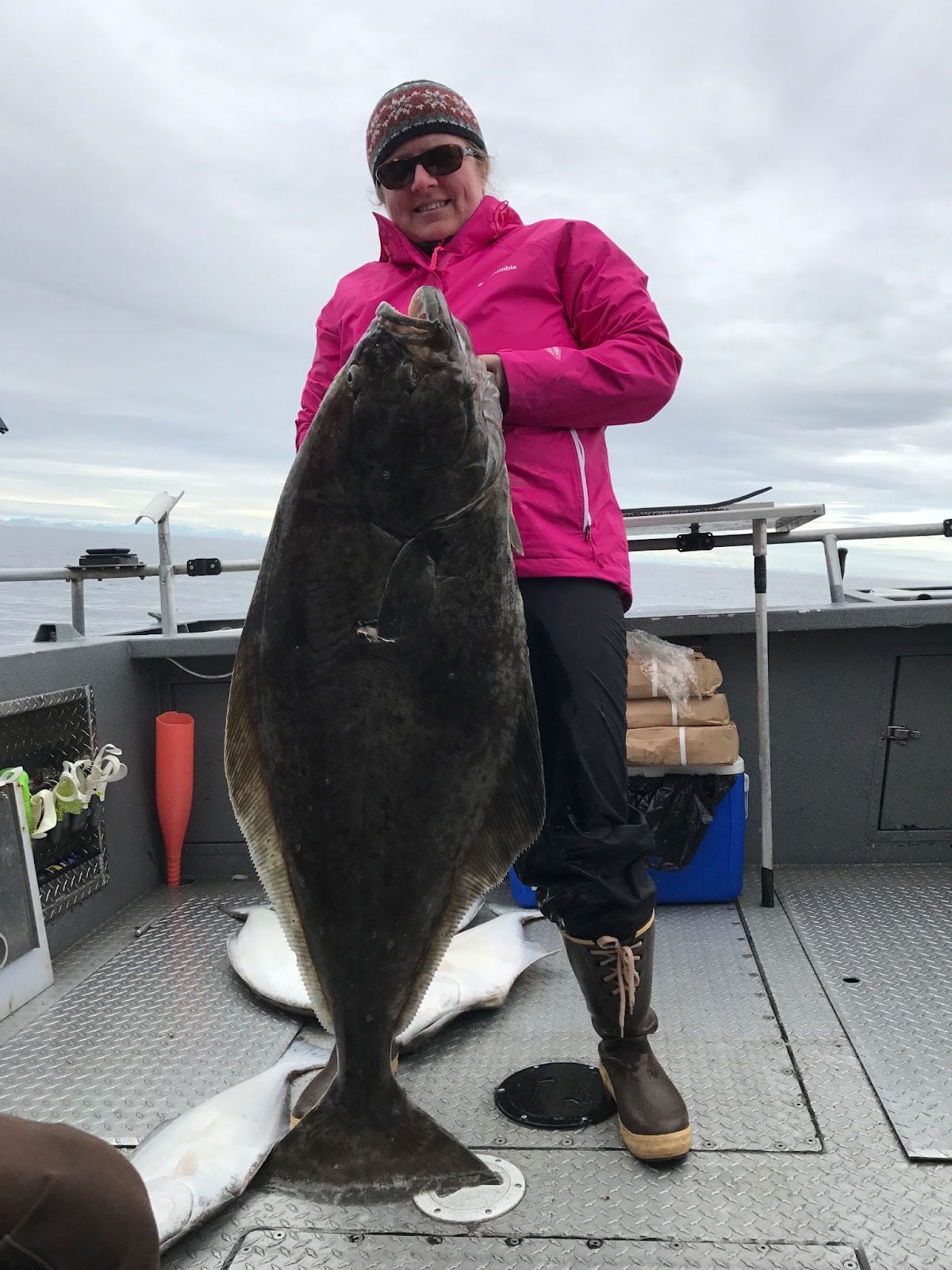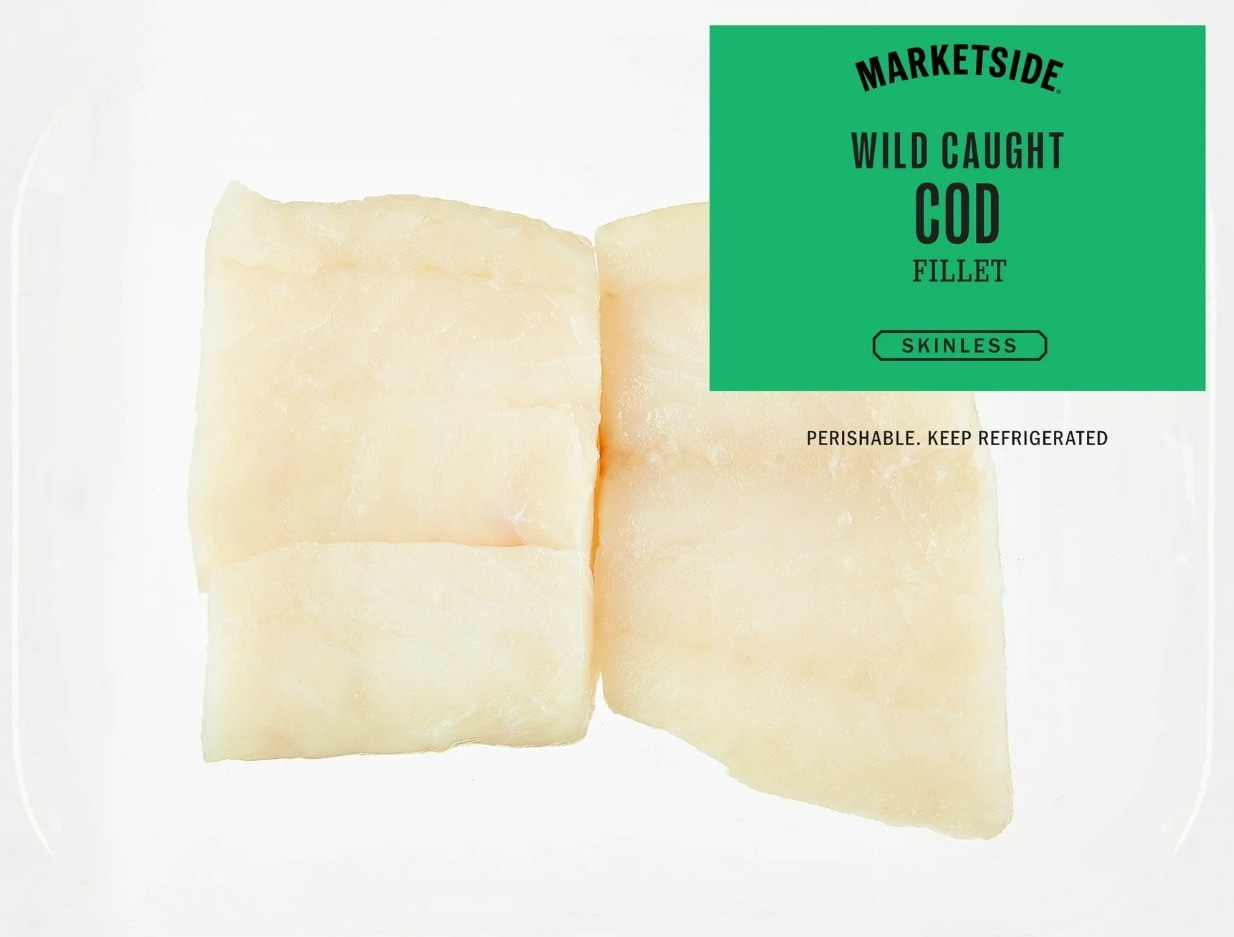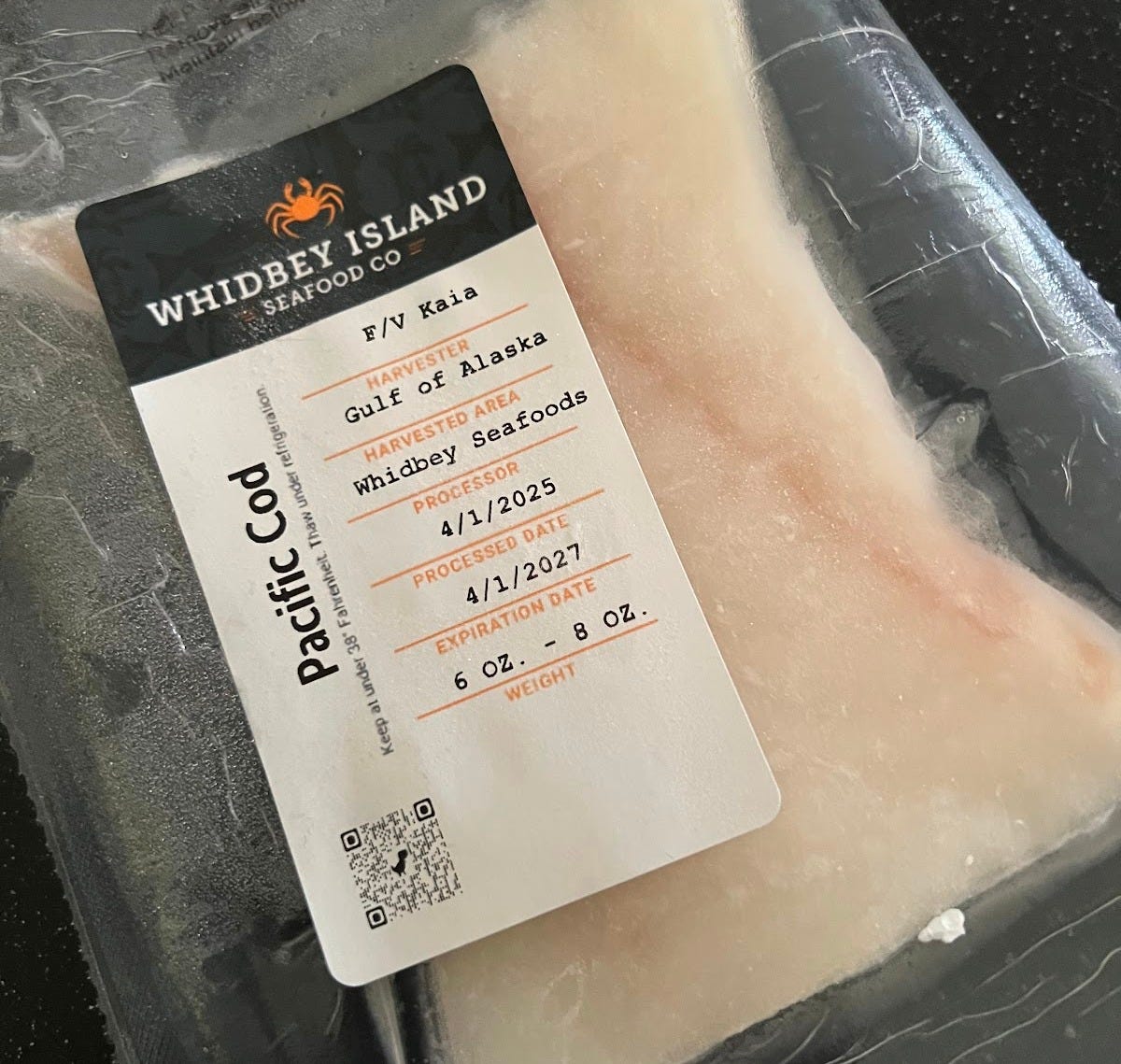By Anna Nelson
Don’t tell Erik and Lacey Velsko, but before I started working with them on Kaia Fisheries' quality seafood initiative, I almost never ate commercial seafood.
My husband and I live on the Northern California coast, where we fish recreationally (both in the Pacific ocean and in the Smith River only 1/4 mile from our house) and eat what we catch, usually within 24 hours. Once you’ve experienced that kind of freshness, it’s hard to go back. And honestly, before I met my husband a decade ago, I didn’t eat fish at all. I couldn’t stand the “fishy” flavor that seemed baked into every fillet I tried, whether from a grocery store or restaurant.
(Gratuitous fishing photo! This one’s from an Alaska trip a few years back, not our backyard. Yes, we ate all that halibut (even if it broke our 24-hour freshness rule).)
So, when I began collaborating with Kaia to help find funding for their value-over-volume approach to Alaskan cod, I was coming in cold—pun intended.
That quickly changed.
My Introduction to Quality
Erik and Lacey took the time to explain the science behind what they were doing: how fish quality is shaped not just by freshness, but by every step of the process—how the fish is bled, cooled, and stored from the moment it comes out of the water. They introduced me to slurry-ice technology, insulated totes, and the entire quality handling model that powers Kaia’s operation. I realized that what I had always considered “normal” for commercial seafood—the off flavors, the mushy texture, that unmistakable "fishy" smell—wasn’t just unfortunate; it was a byproduct of systemic neglect in handling and infrastructure. It was avoidable. In fact, most of the fish on the market today could taste dramatically better if we simply prioritized proper handling from deck to dock. Once I understood that, I couldn’t unsee it—and I couldn’t go back to accepting subpar seafood as the industry standard.
This insight sparked something in me. I began to see fish not just as a product, but as a story—one that could be preserved or lost depending on how we treat it. And in the process, Erik and Lacey helped turn me into a passionate advocate for fish quality initiatives, showing me how better handling and care can transform not just flavor, but the future of the seafood industry. It’s not just about better taste, it’s about respect for the resource, for the harvester, and for the people who bring that fish to the plate.
Anna’s Fish Quality Taste Test
Over the past few months, I started doing my own taste tests to see how quality really plays out at the table. Since Kaia’s current initiative focuses on cod, I stuck with that species to stay consistent. It became something of a personal experiment—part curiosity, part professional validation. Here’s what I found:
Grocery store cod (Walmart): I bought a package of cod to cook at home, but the smell when I opened it was so off-putting that neither my husband nor I could bring ourselves to eat it. It had that unmistakable sour, briny odor that clings to your hands and sinks into your kitchen. We looked at each other and immediately agreed: it wasn’t worth the risk. And this wasn’t the bargain-bin stuff either; I had gone for the "wild-caught," supposedly higher-quality option. It made no difference. It went straight in the trash. And it reminded me, once again, why so many people think they don’t like fish. If this was the only version I had ever known, I wouldn’t either.
Restaurant cod: I started ordering cod more often when eating out, but the results were mixed at best. Most of the time, it was just as disappointing—bland, rubbery, or downright funky. I left more meals unfinished than I care to admit.
Kaia Cod (ordered through Whidbey Island Seafoods): Everything changed. The cod arrived frozen and well-packaged, and I prepared it with cautious optimism. When I cooked it, the texture was light and flaky, and there was zero fishy taste; just clean, mild, slightly sweet flavor and a satisfying bite. It was, hands down, the best piece of commercial fish I’ve ever eaten.
In that moment—tasting something I had helped make possible—I felt a surge of pride and excitement I hadn’t expected. It wasn’t just good; it was validating. It confirmed everything we’d been working toward with Kaia: that better handling and a commitment to quality really can change the game.
If you want to try it yourself, you can order Kaia Cod through Whidbey Island Seafoods.
The Fruits (or Fish) of My Labor
This might sound biased. I work with Kaia, after all. But I’ve built a career around analyzing initiatives and figuring out how to support the ones that matter—and this one really does. What Kaia is doing isn’t just about better fish. It’s about proving that independent fishers can still thrive if we shift the system to reward quality, not just quantity.
When we support practices that keep fish fresh longer, deliver cleaner flavors, and reduce waste, we’re not only helping small boat operators succeed—we’re giving consumers a better product and a better reason to choose domestic seafood.
(Last night’s dinner: Kaia Cod, courtesy of my husband’s cooking—thanks, babe! And no, we don’t usually eat this well or this healthy, but when we do… it’s worth writing home about.)
I still love catching fish in my backyard. But now, thanks to Kaia, I can finally enjoy the best of both worlds: the satisfaction of our own harvest and the confidence that, if I buy from the right source, I can bring home commercial fish that’s just as delicious.
If you’ve ever sworn off fish because of one too many bad experiences, I invite you to try again—starting with Kaia Cod.
Want to hear more stories from people who care about the future of our fishing communities? Subscribe to The Quality Line and join the conversation. Have a story to share? Reach out, we’d love to hear from you — qualitylinefishing@gmail.com
Anna Nelson is a business and grant writing consultant specializing in commercial fishing businesses. She works with independent fishermen, fishing organizations, and seafood stakeholders to develop strategies for sustainability, market access, and industry resilience. Anna is the curator, editor, and one of the contributing authors to The Quality Line.








